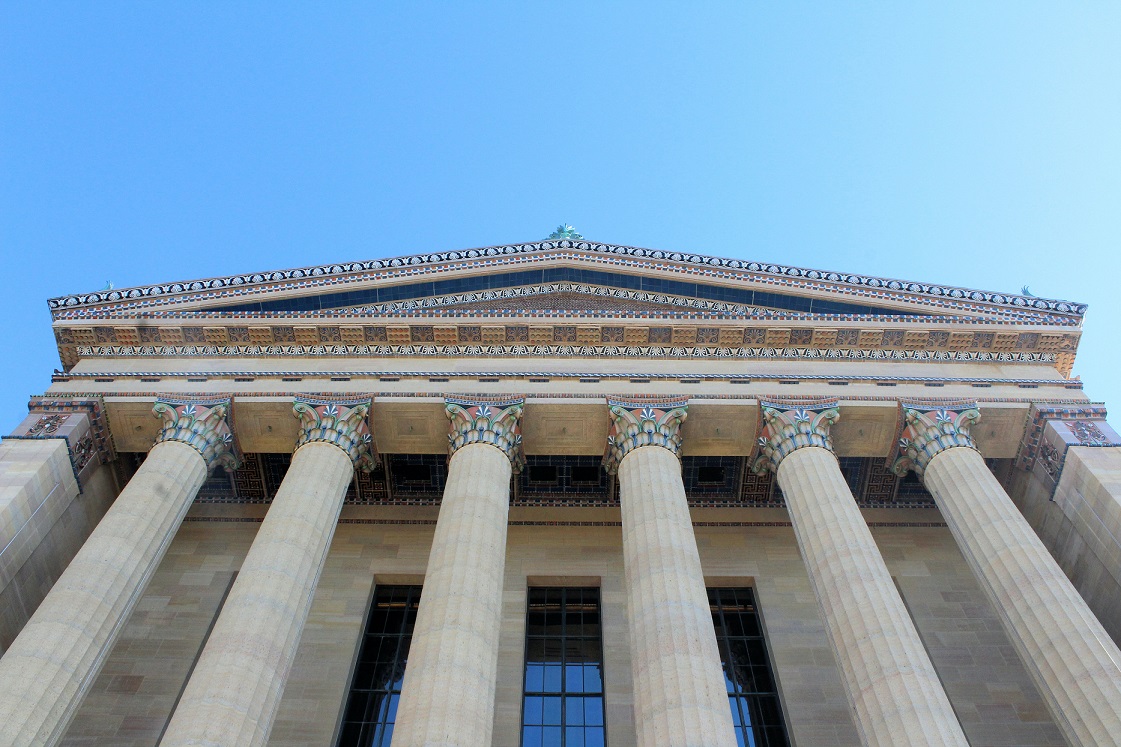The Philadelphia Museum of Art is more than just a world-class institution housing an impressive collection of art and culture. It’s an iconic symbol of the city itself, instantly recognizable for its neoclassical architecture, grandeur, and perhaps most famously, the “Rocky Steps.” In this article, we’ll explore the rich history, cultural significance, and the enduring legacy of the Philadelphia Museum of Art, focusing on the famous steps that have become a symbol of perseverance and triumph.
A Cultural Jewel in Philadelphia: Situated at the western end of Benjamin Franklin Parkway, the Philadelphia Museum of Art is one of the largest art museums in the United States. It was founded in 1876, coinciding with the Centennial Exposition held in Philadelphia to celebrate the 100th anniversary of American independence.
The museum’s original location was in Memorial Hall, a neoclassical structure also constructed for the Centennial Exposition. The current main building, which houses the majority of the museum’s collection, was completed in 1928. The neoclassical design, inspired by ancient Greek temples, is a masterpiece in itself. Its iconic pediment features sculptures representing various aspects of art and culture.
A Diverse and Vast Collection: The Philadelphia Museum of Art boasts an extensive and diverse collection of art spanning centuries and continents. Visitors can explore art and artifacts from Asia, Europe, Africa, the Americas, and more. The museum’s holdings include paintings, sculptures, decorative arts, textiles, and arms and armor.
Among its treasures are works by some of the world’s most renowned artists, including Vincent van Gogh, Pablo Picasso, Rembrandt, and Marcel Duchamp. The museum’s European collections feature a wide range of styles and periods, from medieval and Renaissance art to Impressionism and modern art. The American art collection showcases paintings by Thomas Eakins, Mary Cassatt, and John Singer Sargent, among others.
One of the museum’s standout collections is its Asian art, which includes an impressive array of Chinese porcelain, Japanese woodblock prints, and South Asian sculptures. The museum’s arms and armor collection is also a visitor favorite, with an impressive display of medieval and Renaissance weaponry.
The “Rocky Steps” and Cultural Icon: While the Philadelphia Museum of Art is renowned for its art collections, it gained international fame beyond the art world thanks to a fictional character: Rocky Balboa. In the 1976 film “Rocky,” written by and starring Sylvester Stallone, the museum’s iconic steps were prominently featured in a pivotal training montage. As Rocky ascends the steps, triumphantly raising his arms in the air at the summit, a powerful and enduring cinematic moment is created.
The image of Rocky Balboa conquering the steps has become an indelible symbol of perseverance, determination, and the human spirit’s ability to overcome adversity. It’s a moment that resonates with people around the world, transcending language and culture.
“Rocky” and the Steps’ Enduring Legacy: The success of “Rocky” and its sequels ensured the Philadelphia Museum of Art’s place in popular culture. The steps have since become affectionately known as the “Rocky Steps.” They serve as a pilgrimage site for fans of the films and a symbol of personal triumph for anyone who climbs them.
In the decades following the release of “Rocky,” the steps have played a central role in Philadelphia’s identity. Visitors from all over the world flock to the museum not only to appreciate its world-class art but also to recreate Rocky’s triumphant run. It’s a common sight to see people, from tourists to local fitness enthusiasts, racing up the 72 stone steps and triumphantly raising their arms at the top.
The steps’ cultural significance has also extended to philanthropy and awareness. The annual “Rocky Run,” a charity race up the steps, has become a tradition that raises funds for various causes. It’s an embodiment of the themes of determination and resilience that Rocky Balboa represents.
The Museum Experience: Beyond its association with the “Rocky Steps,” the Philadelphia Museum of Art offers a rich and diverse experience for art enthusiasts and casual visitors alike. The museum’s interior is as impressive as its exterior, with vast halls and galleries housing thousands of works of art.
Visitors can explore various collections, from contemporary art to the arts of Africa. The museum often hosts special exhibitions that showcase art from around the world, making each visit a unique experience. There are also educational programs, lectures, and events designed to engage visitors and deepen their appreciation of art and culture.
A Cultural Hub on the Parkway: The Philadelphia Museum of Art isn’t just a destination for art lovers; it’s a hub of cultural activity in the city. Its location on the Benjamin Franklin Parkway, a grand boulevard modeled after the Champs-Élysées in Paris, places it at the center of Philadelphia’s cultural district. Nearby, you’ll find other cultural institutions such as the Rodin Museum, the Barnes Foundation, and the Franklin Institute.
The museum’s iconic steps also serve as a gathering place for various events throughout the year. From Fourth of July celebrations to outdoor yoga sessions, the steps are a focal point for communal activities.
Preserving the Legacy: In recent years, the Philadelphia Museum of Art has undertaken extensive renovations and expansion projects to preserve and enhance its facilities. These efforts ensure that future generations of visitors can continue to appreciate its world-class collections and iconic steps.
The “Rocky Steps” continue to inspire individuals to challenge themselves and persevere in the face of adversity. They are a testament to the enduring power of film and art to shape our collective consciousness.
The Philadelphia Museum of Art, with its world-class collections and iconic “Rocky Steps,” is a cultural treasure that embodies the spirit of perseverance and triumph. It stands not only as a testament to the enduring power of art and film but also as a symbol of the city’s rich cultural heritage. As visitors climb those famous steps, they are not only following in the fictional footsteps of Rocky Balboa but also ascending to a place where art, culture, and inspiration converge.
